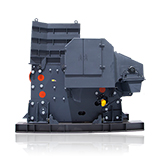5 Ways to Improve Output of Your Mobile Screening Plant
Mobile screening plants are essential in the aggregate, mining, and construction industries for their ability to sort and classify materials efficiently on-site. However, to maximize their potential, it's crucial to continually optimize their output. Improving the productivity and efficiency of a mobile screening plant is not only about better equipment; it's about smart operations, maintenance practices, and adapting to the specific material being processed.
In this article, we'll explore five key ways to improve the output of your mobile screening plant, ensuring that you achieve higher throughput, better quality material, and reduce operational costs.

1. Optimize Screen Media for Material Type and Plant Conditions
The screen media (such as mesh, trommel, or grizzly) plays a significant role in the performance of a mobile screening plant. Choosing the correct screen media for the specific material type being processed can drastically affect throughput and efficiency.
Key Factors to Consider:
- Material Characteristics: Different materials—such as sand, gravel, crushed stone, or mulch—have distinct properties. For example, sand requires finer mesh sizes than gravel to effectively separate the particles. Harder materials may need more robust screen media to withstand the wear and tear during the screening process.
- Clogging and Blinding: One of the most significant challenges in screening is clogging or blinding of the screen media, particularly when handling wet or sticky materials. To prevent this, consider using self-cleaning screen media or polyurethane screens that allow material to pass more freely without becoming stuck.
- Screen Size and Configuration: The aperture size and configuration of the screen should be tailored to the desired output size of the material. Larger apertures work well for coarse materials, while smaller ones are ideal for finer products. A multi-deck screen setup can further enhance screening efficiency by separating materials into different sizes in a single operation.
Actionable Tip:
Regularly monitor the wear and tear on screen media, and replace it before it becomes overly worn. Also, ensure that the media is optimized for the material type and that the right aperture size is used for the required product.
2. Optimize Feed Rate and Material Flow
The efficiency of a mobile screening plant can be significantly affected by the feed rate—the speed at which material is introduced into the plant. Feeding too quickly can overwhelm the plant’s capacity, while feeding too slowly can result in underutilization of resources. To strike the right balance, consider the following:
Key Considerations for Feed Rate:
- Match Feed Rate to Plant Capacity: Ensure the feed rate aligns with the plant’s capacity to handle material. A mobile screening plant will typically have an optimal throughput range. If you feed too much material too quickly, you can risk overloading the screens, reducing their efficiency, and causing unnecessary wear. On the other hand, a slow feed rate can mean the plant is underutilized, reducing overall productivity.
- Material Consistency: Ensure the material being fed into the plant is consistent in size and quality. Irregularly sized materials or mixed types can lead to blockages or uneven screening, which reduces output. Implementing a primary sorting process before material enters the plant can help achieve a more uniform feed.
- Feeding Equipment: The type of feeding equipment you use (conveyor belts, feeders, etc.) also affects the flow of material. Use a controlled feeding mechanism that can regulate material flow, and consider using vibrating feeders for consistent and even material distribution across the screens.
Actionable Tip:
Monitor feed rates regularly using automated systems or sensors, and make adjustments to ensure they are within the recommended operating range for your specific plant and material type.

3. Regular Maintenance and Preventative Care
A lack of proper maintenance is one of the leading causes of reduced plant efficiency. Over time, wear and tear on the equipment components can lead to performance degradation, resulting in frequent downtimes and reduced output. Regular maintenance is essential to keep everything running smoothly.
Key Maintenance Areas to Focus On:
- Screen Media: As previously mentioned, the condition of screen media is critical to screening efficiency. Regularly inspect for any signs of wear, damage, or clogging, and replace screen media when necessary.
- Bearings and Motors: The motors and bearings are responsible for driving the vibratory motion of the screens. A lack of lubrication or misalignment can cause excessive wear or even failure. Ensure that these components are regularly lubricated, and check for any misalignments or unusual vibrations.
- Hydraulic System: Many mobile screening plants rely on hydraulic systems for operation. Regularly inspect hoses, pumps, and valves for any leaks or wear. Also, ensure that hydraulic fluids are at the correct levels and changed at the prescribed intervals.
- Cleaning and Lubrication: Keeping parts clean and properly lubricated can reduce friction and wear, increasing the lifespan of components and improving overall plant efficiency.
Actionable Tip:
Implement a scheduled maintenance program to ensure key components like motors, bearings, and screen media are checked and replaced proactively, reducing the risk of unexpected downtime.
4. Use of Automation and Monitoring Technologies
One of the best ways to improve plant output is by integrating automation and monitoring systems that can provide real-time feedback on the plant’s performance. The use of smart technologies allows for better optimization of the entire screening process, helping operators make quick adjustments to maximize efficiency.
Automation Benefits:
- Real-time Monitoring: Sensors placed throughout the plant can monitor parameters such as feed rate, vibration levels, screen load, and material flow. Real-time data allows operators to make adjustments quickly and prevents unnecessary downtime or inefficiencies.
- Automation of Adjustments: Automated systems can adjust variables such as vibration speed or feed rate automatically based on changing conditions. This dynamic optimization ensures that the plant is operating at peak performance without requiring constant manual input.
- Predictive Maintenance: Advanced systems can also track wear patterns and alert operators when components need maintenance or replacement, preventing unexpected breakdowns and increasing plant uptime.
Actionable Tip:
Invest in automated monitoring systems for real-time feedback and predictive maintenance. These technologies can identify inefficiencies early, leading to reduced downtime and improved productivity.
5. Optimize Material Handling and Stockpiling
Once materials have been screened, the next step is to handle and stockpile them efficiently. Inefficient material handling can lead to increased costs, as well as reduced output and quality of the final product.
Key Material Handling Strategies:
- Stockpile Organization: Efficient stockpiling involves creating separate piles for each screened product. This prevents cross-contamination of different sizes and types of materials. Stockpiling should be done in a way that allows for easy retrieval and reduces material handling time.
- Use of Conveyors: Incorporating multiple conveyors or transfer points can reduce the time and effort needed to move materials from the screening plant to the stockpile. Using angled conveyors can help increase the stockpiling capacity and prevent bottlenecks.
- Minimize Material Loss: Ensure that there is minimal material loss during handling. This includes reducing spillage during transport and ensuring that material handling equipment like conveyors are properly aligned to avoid product losses.
- Optimizing Stockpile Size: Avoid overstocking, as large piles can create inefficiencies in retrieval and handling. A manageable stockpile size ensures quicker access to the material and better control over the plant’s output.
Actionable Tip:
Integrate material handling systems that minimize time spent moving materials from one part of the plant to another, and organize stockpiles to keep different material grades separated and easy to access.
Improving the output of a mobile screening plant is a multifaceted challenge that requires attention to detail, strategic planning, and continuous optimization. By focusing on the right screen media, optimizing feed rates, performing regular maintenance, leveraging automation, and improving material handling, plant operators can ensure maximum productivity, reduced downtime, and improved material quality.
These strategies will not only increase the output of your mobile screening plant but also lead to cost savings, greater operational efficiency, and higher customer satisfaction. By continually monitoring performance and adapting to changing conditions, you can keep your mobile screening plant performing at its best, helping you stay competitive in the industry.







